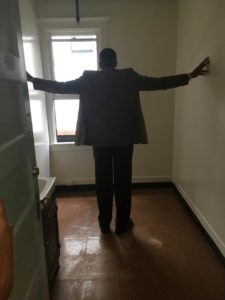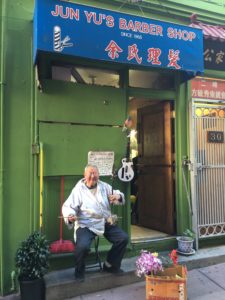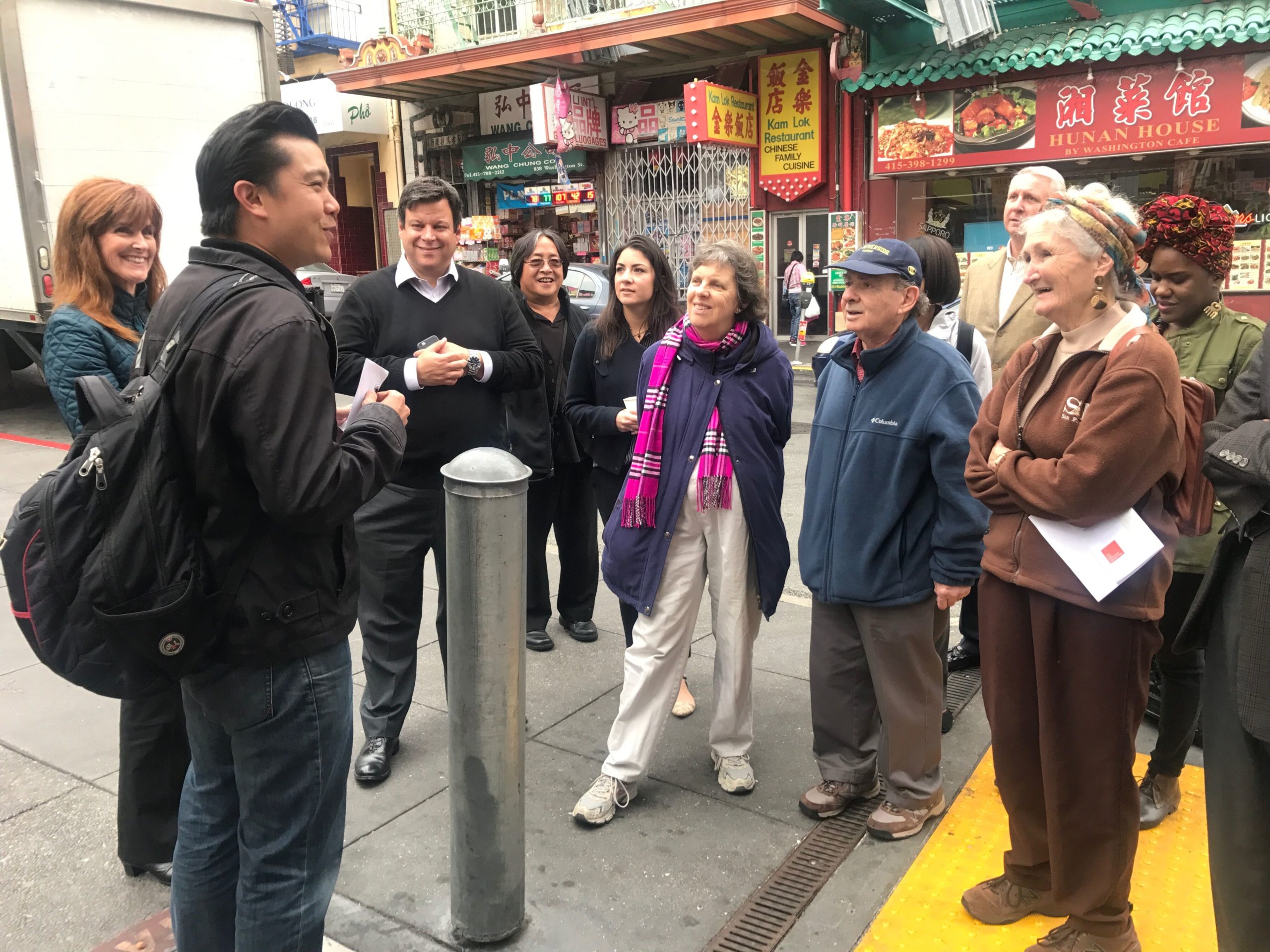The San Francisco Foundation held the first of its neighborhood walking tours on October 12th. A group of donors visited Chinatown and experienced, for a brief moment, what it’s like to live in this extremely dense neighborhood. Tom, one of our fund advisors, said the tour “was life changing in that it demonstrated how hidden some of the issues are in local communities.”
Our group started at the Chinatown Community Development Centeron Clay Street. Norman Fong, who has been the executive director since 1990, told his own story of the area. His grandmother emigrated from China in the late 1800s, and his mom was born in Chinatown in 1919. He described anti-Chinese sentiment which existed in the late 1800s and led to the 1882 Chinese Exclusion Act, which prohibited all immigration of Chinese laborers. Norman is passionate about place and the role place plays in our lives, and he’s been fighting to ensure Chinatown remains a vibrant, relevant and affordable community for decades.
 We walked next door to a single room occupancy, or SRO, owned by Chinatown Community Development Center. We visited a standard room, which happened to be vacant. It measured just 8’ x 10’ with one small sink and a small closet. The shared bathroom and small shared kitchen are down the hall. Many SROs are occupied by families of five or eight people all living in this one small room. This was one of the most eye-opening moments on the tour for our donors.
We walked next door to a single room occupancy, or SRO, owned by Chinatown Community Development Center. We visited a standard room, which happened to be vacant. It measured just 8’ x 10’ with one small sink and a small closet. The shared bathroom and small shared kitchen are down the hall. Many SROs are occupied by families of five or eight people all living in this one small room. This was one of the most eye-opening moments on the tour for our donors.
Norman explained to us that this particular SRO is rented by CCDC to its clients for $223 a month; market rates for SROs range from $600-$1,000 a month. This type of housing makes up half of Chinatown’s housing, and since 2001, there has been a 55% increase in the number of families living in SROs.
Portsmouth Square, Chinatown’s “living room,” was our next stop. We could see people engaged in Tai Chi, card games and chess. With so many residents living in one-room SROs, the importance of open space was abundantly clear. The bathrooms here are also some of San Francisco’s most used public facilities – which makes sense, because the park is one of the City’s busiest.
We proceeded down Washington Street towards Stockton to view the Central Subway Project that is under construction. The Project is a 1.7 mile extension of Muni’s T-Third Line and is slated to open in 2019. Stops include South of Market, Yerba Buena, Union Square and at the end of the line – Chinatown. The Central Subway will vastly improve transit options for the residents of one of the most densely populated neighborhoods in the country.
 Our group paused briefly on Washington Street, and Alex Tom, executive director of the Chinese Progressive Association, showed us several restaurants where his organization successfully helped low-wage workers organize and recover back-pay and owed wages. Next, we visited historic Ross Alley – the oldest alley in San Francisco. We stopped at 41 Ross, a collaboration between CCDC and the Chinese Culture Center of San Francisco. More than an art gallery, 41 Ross is a community resource space and interactive studio that promotes dialogue, appreciation, and creative engagement around the local Chinatown culture.
Our group paused briefly on Washington Street, and Alex Tom, executive director of the Chinese Progressive Association, showed us several restaurants where his organization successfully helped low-wage workers organize and recover back-pay and owed wages. Next, we visited historic Ross Alley – the oldest alley in San Francisco. We stopped at 41 Ross, a collaboration between CCDC and the Chinese Culture Center of San Francisco. More than an art gallery, 41 Ross is a community resource space and interactive studio that promotes dialogue, appreciation, and creative engagement around the local Chinatown culture.
Norman explained that CCDC’s Adopt-an-Alleyway Youth Project is a youth-run and youth-led community service and leadership program. The Youth organize, recruit and lead peers in monthly neighborhood clean-ups and alleyway beautification projects.
We also stopped into the famous Golden Gate Fortune Cookie Factory for a quick treat! The Factory has been supplying fortune cookies to Chinatown and around the world since 1962.
The last stop on the walking tour was site of the original I-Hotel (International Hotel) at the corner of Kearny and Jackson Streets. The hotel was demolished in 1981, and it was rebuilt and opened in 2005 as the International Hotel Senior Housing. This Senior Housing is the culmination of the 36-year struggle over the I-Hotel, an old SRO building that drew national attention in August 1977 when its elderly Filipino and Chinese residents were evicted by San Francisco sheriffs in a brutal raid. Community activists battled for years to have affordable housing replace the torn-down hotel, instead of the office high-rise planned by developers.
After over 20 years as a vacant lot, the site was purchased by the Archdiocese of San Francisco. The Archdiocese decided to develop an underground garage, and partnered with International Hotel Senior Housing, Inc. and Chinatown CDC to develop senior housing above. The I-Hotel now stands at 15 stories of senior affordable housing development with many amenities for residents including a daily nutrition and activities program and a ground floor Cultural Center operated by the Manilatown Heritage Foundation. The building features design elements and art depicting the history and legacy of the International Hotel struggle.
Alex Tom, from the Chinese Progressive Association, helped wrap-up our tour on the rooftop deck of the I-Hotel. CPA was founded in 1972 and educates, organizes and empowers the low income and working class immigrant Chinese community in San Francisco to build collective power with other oppressed communities to demand better living and working conditions and justice for all people.
The foundation heard from our donor community that you’re interested in tours like this – to help build a learning community with other donors and with the foundation. We plan to hold several more walking tours in our region so stay tuned for future dates and details or contact donorservices@sff.org for more information.
Learn more about life in Chinatown’s single-room hotels in this 10-minute documentary short, Home Is a Hotel, which tells the story of Huan Di and her daughter Jessica, who share an SRO unit in Chinatown. Directed by local filmmakers and featured in PBS’s 2016 Online Film Festival.


